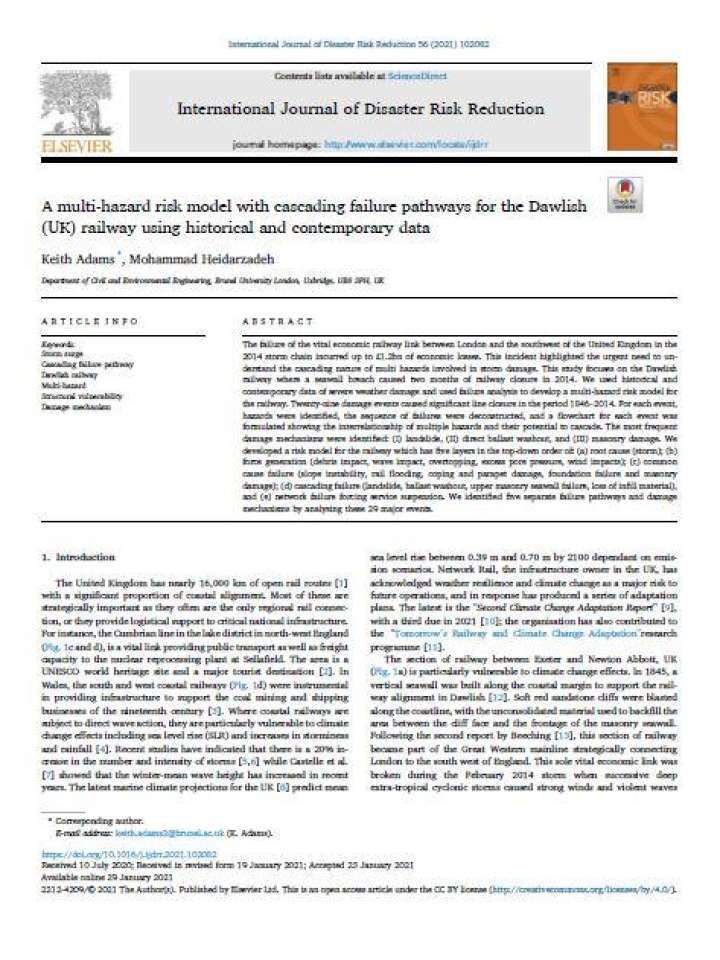A multi-hazard risk model with cascading failure pathways for the Dawlish (UK) railway using historical and contemporary data
This study focuses on the Dawlish railway where a seawall breach caused two months of railway closure in 2014. The researchers used historical and contemporary data of severe weather damage and used failure analysis to develop a multi-hazard risk model for the railway. Twenty-nine damage events caused significant line closure in the period 1846–2014. For each event, hazards were identified, the sequence of failures were deconstructed, and a flowchart for each event was formulated showing the interrelationship of multiple hazards and their potential to cascade.
The most frequent damage mechanisms were identified: (I) landslide, (II) direct ballast washout, and (III) masonry damage. The authors developed a risk model for the railway which has five layers in the top-down order of: (a) root cause (storm); (b) force generation (debris impact, wave impact, overtopping, excess pore pressure, wind impacts); (c) common cause failure (slope instability, rail flooding, coping and parapet damage, foundation failure and masonry damage); (d) cascading failure (landslide, ballast washout, upper masonry seawall failure, loss of infill material), and (e) network failure forcing service suspension. They identified five separate failure pathways and damage mechanisms by analysing these 29 major events.
Explore further
